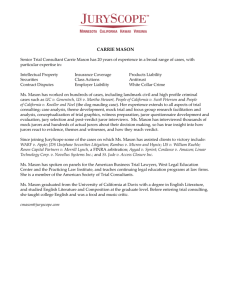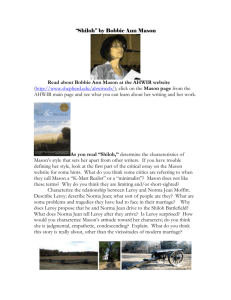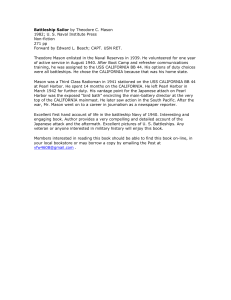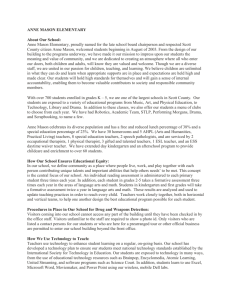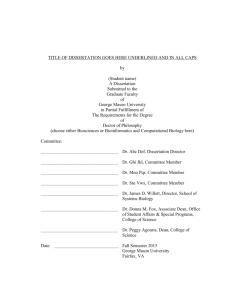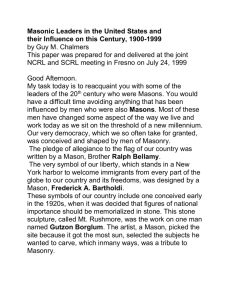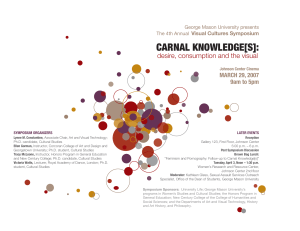REVIEW Shiloh and Other Stories (1982) Bobbie Ann Mason (1940
advertisement
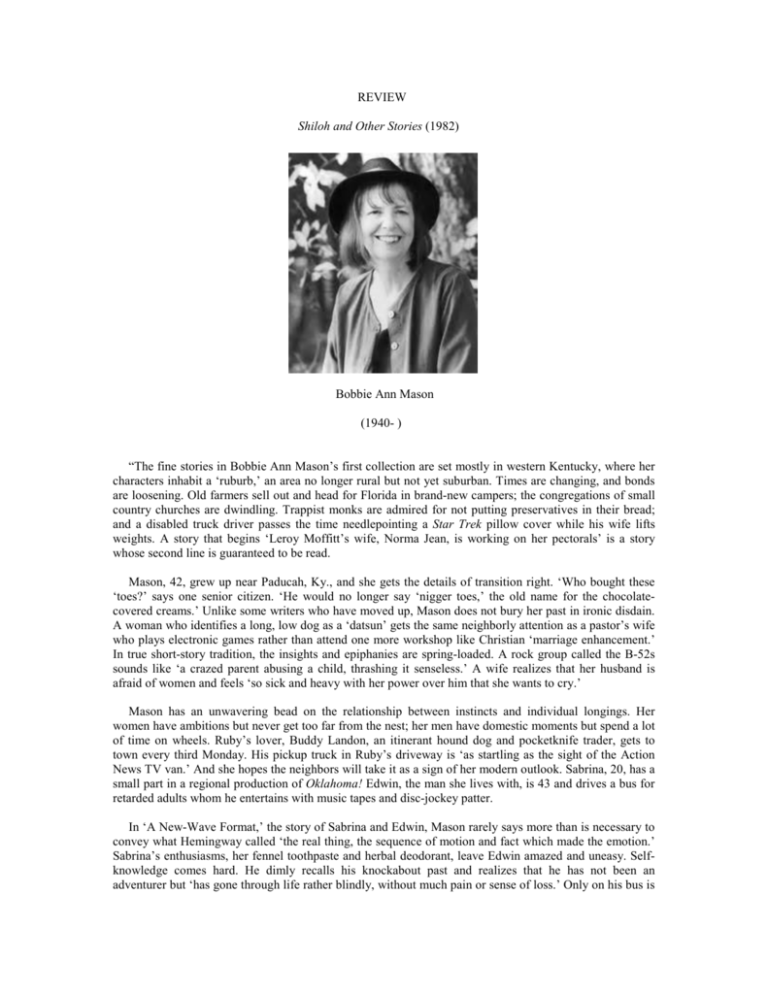
REVIEW Shiloh and Other Stories (1982) Bobbie Ann Mason (1940- ) “The fine stories in Bobbie Ann Mason’s first collection are set mostly in western Kentucky, where her characters inhabit a ‘ruburb,’ an area no longer rural but not yet suburban. Times are changing, and bonds are loosening. Old farmers sell out and head for Florida in brand-new campers; the congregations of small country churches are dwindling. Trappist monks are admired for not putting preservatives in their bread; and a disabled truck driver passes the time needlepointing a Star Trek pillow cover while his wife lifts weights. A story that begins ‘Leroy Moffitt’s wife, Norma Jean, is working on her pectorals’ is a story whose second line is guaranteed to be read. Mason, 42, grew up near Paducah, Ky., and she gets the details of transition right. ‘Who bought these ‘toes?’ says one senior citizen. ‘He would no longer say ‘nigger toes,’ the old name for the chocolatecovered creams.’ Unlike some writers who have moved up, Mason does not bury her past in ironic disdain. A woman who identifies a long, low dog as a ‘datsun’ gets the same neighborly attention as a pastor’s wife who plays electronic games rather than attend one more workshop like Christian ‘marriage enhancement.’ In true short-story tradition, the insights and epiphanies are spring-loaded. A rock group called the B-52s sounds like ‘a crazed parent abusing a child, thrashing it senseless.’ A wife realizes that her husband is afraid of women and feels ‘so sick and heavy with her power over him that she wants to cry.’ Mason has an unwavering bead on the relationship between instincts and individual longings. Her women have ambitions but never get too far from the nest; her men have domestic moments but spend a lot of time on wheels. Ruby’s lover, Buddy Landon, an itinerant hound dog and pocketknife trader, gets to town every third Monday. His pickup truck in Ruby’s driveway is ‘as startling as the sight of the Action News TV van.’ And she hopes the neighbors will take it as a sign of her modern outlook. Sabrina, 20, has a small part in a regional production of Oklahoma! Edwin, the man she lives with, is 43 and drives a bus for retarded adults whom he entertains with music tapes and disc-jockey patter. In ‘A New-Wave Format,’ the story of Sabrina and Edwin, Mason rarely says more than is necessary to convey what Hemingway called ‘the real thing, the sequence of motion and fact which made the emotion.’ Sabrina’s enthusiasms, her fennel toothpaste and herbal deodorant, leave Edwin amazed and uneasy. Selfknowledge comes hard. He dimly recalls his knockabout past and realizes that he has not been an adventurer but ‘has gone through life rather blindly, without much pain or sense of loss.’ Only on his bus is he in complete control, jolting his handicapped audience with Jim Morrison’s Light My Fire, ‘a song that was so long it carried them from the feed mill on one side of town to the rendering plant on the other.’ When Sabrina suggests marriage and adds that she will keep her maiden name, Edwin is at a loss for thought and feeling. But not Bobbie Ann Mason. With intelligence, technical mastery and literary tact, she makes an unsettling point: when the cult of life-styles and celebrity junk-think crack the rectitude of western Kentucky, there must be a lot of people everywhere who are having a hard time feeling at home at home.” R. Z. Sheppard Time (3 January 1983)
